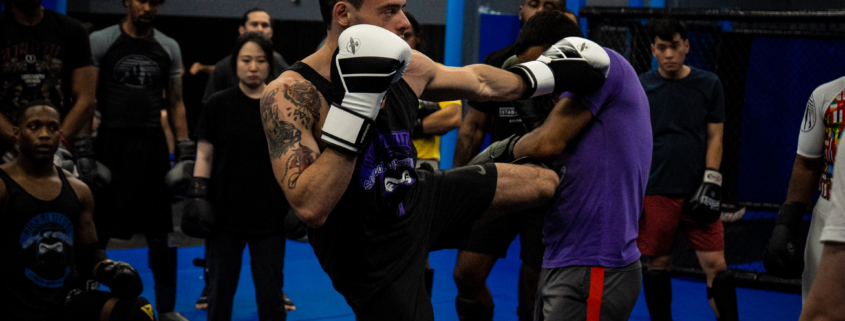Holland drills in kickboxing, often associated with the Dutch kickboxing style, are a series of training exercises designed to improve a fighter’s striking skills, conditioning, and overall performance. These drills may include pad work and sparring, focusing on techniques like low kicks, knees, and elbows. The term “Holland drills” is somewhat colloquial and may refer to a variety of specific training routines used by fighters and coaches in the Netherlands or influenced by Dutch kickboxing techniques.
Holland drills, offer several benefits for kickboxers. Here are some reasons why they are considered effective for kickboxing training:
Emphasis on Power and Precision – Holland drills often focus on developing powerful and precise strikes. This helps kickboxers increase the impact of their punches and kicks while maintaining accuracy.
Versatility in Strikes – Dutch kickboxing is known for incorporating a wide range of strikes, including low kicks, knees, and elbows. Holland drills can improve a fighter’s ability to use these versatile techniques effectively.
Conditioning – These drills can be physically demanding and help improve a fighter’s cardiovascular endurance and overall conditioning, which is essential in kickboxing.
Defense and Counters – They also emphasize defensive skills and counters, enabling kickboxers to respond effectively to their opponents’ attacks.
Sparring Preparation – Holland drills often involve sparring sessions, which are crucial for practicing techniques in a realistic and controlled environment, preparing fighters for actual bouts.
Mental Toughness – The rigorous nature of these drills can help build mental toughness and resilience, important attributes for kickboxers.
Coach Expertise – Dutch kickboxing has a rich tradition, and many highly skilled coaches and trainers in the Netherlands are well-versed in these training methods. This expertise can be invaluable for fighters looking to improve their skills.
It’s essential to incorporate Holland drills into a well-rounded training program, as they complement other aspects of kickboxing training, such as strength and conditioning, flexibility, and strategy. However, it’s crucial to work with a qualified coach who can tailor these drills to an individual’s skill level and goals





